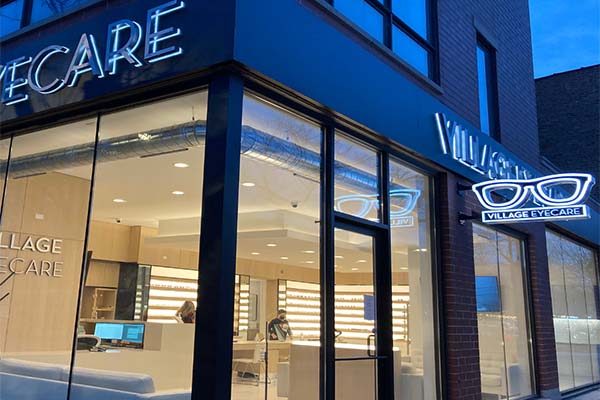Top Eye Doctors in Andalusia: Expert Vision Look After Your Household
Top Eye Doctors in Andalusia: Expert Vision Look After Your Household
Blog Article
Understanding the Different Vision Correction Procedures Available for Clearer Sight
In the world of vision modification procedures, a multitude of alternatives exist to attend to refractive errors and offer people with more clear view. From the extensively identified LASIK surgical procedure to much less intrusive procedures like PRK and implantable lenses, the field of ophthalmology provides a series of strategies customized to fit different demands and preferences. Each procedure comes with its very own collection of considerations, benefits, and potential risks. Comprehending the subtleties of these vision correction techniques is essential for making notified decisions about one's aesthetic health. Allow's check out the intricacies of these treatments and dropped light on the course to achieving improved vision quality.
LASIK Surgery
LASIK surgical treatment is a typical refractive treatment utilized to correct vision problems such as farsightedness, nearsightedness, and astigmatism. This medical technique, which represents Laser-Assisted sitting Keratomileusis, intends to reshape the cornea to boost exactly how light is concentrated on the retina, inevitably enhancing vision clearness. Throughout the treatment, a thin flap is produced on the cornea, and a laser is made use of to remove precise amounts of tissue to reshape it appropriately. This improving permits light to be properly concentrated onto the retina, fixing refractive mistakes.
Among the main advantages of LASIK surgical treatment is the fast improvement in vision experienced by people. Lots of people discover a considerable improvement in their vision right away after the procedure. Furthermore, most patients report minimal pain and discomfort during the surgical procedure and healing period. The recuperation time for LASIK is relatively quick, with lots of people returning to their everyday tasks within a day or 2 post-operation. Overall, LASIK surgery is a preferred choice for people seeking a lasting option for their vision problems.
PRK Procedure

PRK is an ideal option for individuals with thin corneas or those at a higher risk of eye injuries, as it does not involve developing a corneal flap. The recovery process for PRK is a little longer compared to LASIK, as the epithelium requires time to regenerate. Patients might experience pain and blurred vision for a couple of days complying with the treatment.
In spite of the longer healing time, PRK can produce superb cause vision improvement, making it a beneficial alternative for those who may not be suitable candidates for LASIK surgical treatment. - Eye Doctors in Andalusia
Implantable Lenses
As opposed to PRK where the cornea is reshaped directly, implantable lenses supply an additional method for dealing with vision by inserting artificial lenses inside the eye. This procedure is specifically valuable for people with high levels of farsightedness, nearsightedness, or astigmatism that might not appropriate candidates for laser surgical treatments like LASIK or PRK.
Implantable lenses, likewise referred to as phakic intraocular lenses, job by supplementing the eye's natural lens with a synthetic one. These lenses can be put in front of the all-natural lens (former chamber) or behind the iris and before the natural lens (posterior chamber) By changing the power and positioning of these lenses, ophthalmologists can properly fix refractive mistakes and enhance aesthetic acuity.
One benefit of implantable lenses is that they are detachable and exchangeable, offering adaptability for future changes. However, similar to any type of procedure, there are risks entailed, such as infection or cataract development. People considering implantable lenses must seek advice from an eye treatment expert to establish one of the most ideal option based upon their individual needs and eye health and wellness.
Corneal Rings

The procedure for inserting corneal rings is fairly fast and minimally intrusive, often executed as an outpatient procedure. Throughout the surgical procedure, the ophthalmologist makes a little laceration in the cornea and inserts the rings at a details deepness. As soon as in place, the rings assist to improve the cornea, offering a smoother surface for light to get in the eye, which can cause clearer vision.
Corneal rings are considered a relatively easy to fix treatment, as they can be removed or changed if required. While they might not completely get rid of the requirement for glasses or call lenses, corneal rings can considerably enhance vision high quality and overall aesthetic comfort for people with keratoconus or various other corneal abnormalities.
Refractive Lens Exchange
Adhering to the improvement of corneal abnormalities with procedures like corneal rings, another vision modification technique that can deal with refractive errors is Refractive Lens Exchange (RLE) RLE is a surgical procedure that entails replacing the eye's all-natural lens with a synthetic intraocular lens (IOL) to correct refractive errors such as presbyopia, farsightedness, and nearsightedness. This procedure is particularly useful for individuals who might not appropriate candidates for treatments like LASIK or PRK due to factors such as thin corneas or high refractive errors.
RLE belongs to cataract surgical treatment, as both include removing the eye's all-natural lens; however, in RLE, the lens is clear, not over cast as in cataracts. The synthetic lens dental implanted throughout RLE can be tailored to deal with the individual's particular refractive mistake, offering clear vision at various try this site ranges. Recovery time for RLE is relatively fast, and people can anticipate enhanced vision soon after the treatment. Just like any kind of surgery, potential risks and issues exist, so a comprehensive consultation with an eye treatment expert is necessary to establish if RLE is the right vision correction alternative.
Conclusion

In the realm of vision correction procedures, a plethora of alternatives exist to resolve refractive mistakes and offer people with clearer sight.LASIK surgical procedure is a typical refractive treatment utilized to fix vision problems such as astigmatism, farsightedness, and nearsightedness.While additionally a common refractive treatment, the PRK (Photorefractive Keratectomy) method differs from LASIK surgical treatment in its method to fixing vision issues.Complying with the modification of corneal irregularities with treatments like corneal rings, one more vision adjustment method that can attend to refractive mistakes is Refractive Lens Exchange (RLE) LASIK surgery, PRK treatment, implantable lenses, corneal rings, and refractive lens exchange are all options click here for more info that can resolve various vision concerns.
Report this page